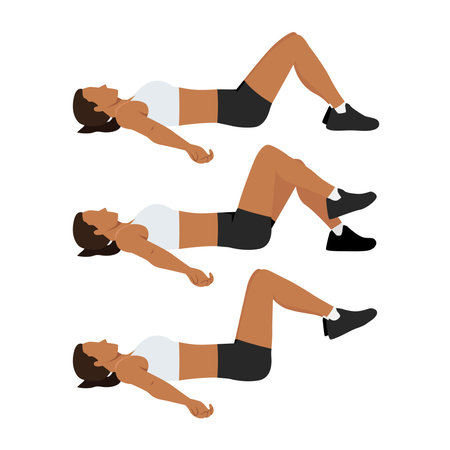Introduction to Balance and Coordination in Later Life
Balance and coordination are fundamental physical abilities that play a vital role in maintaining independence and quality of life as we age. In the UK, where the proportion of older adults is steadily increasing, understanding these concepts becomes especially important. Balance refers to the bodys ability to maintain its centre of gravity, whether stationary or moving, while coordination involves the harmonious functioning of muscles and joints to produce smooth, purposeful movements. With age, natural physiological changes—such as reduced muscle strength, joint flexibility, and slower reaction times—can compromise these abilities. This decline not only affects mobility but also increases the risk of falls, which remain a significant health concern among older adults across Britain. Therefore, prioritising balance and coordination exercises is essential for supporting healthy ageing and enabling older people in the UK to continue enjoying active, fulfilling lives within their communities.
2. Challenges Facing Older Adults in the UK
Older adults in the UK face a unique set of challenges that make balance and coordination exercises particularly important. Demographic trends indicate an ageing population, with recent statistics showing that nearly 19% of the UK population is aged 65 and over. This shift brings about increased prevalence of age-related health concerns such as reduced mobility, chronic illnesses, and susceptibility to falls. Additionally, environmental factors—such as urban design, weather conditions, and accessibility to safe public spaces—can impact the ability of older adults to remain active and independent.
Demographic Trends
| Age Group | Percentage of Population (2023) |
|---|---|
| 65-74 | 10% |
| 75-84 | 6% |
| 85+ | 3% |
This ageing demographic is accompanied by a rise in multi-morbidity; many older adults live with more than one chronic condition, such as arthritis or cardiovascular disease, which can directly affect balance and coordination.
Prevalent Health Concerns
- Increased risk of falls: The NHS reports that around one in three adults over 65 experience at least one fall each year.
- Sarcopenia: Age-related muscle loss reduces strength and stability.
- Cognitive decline: Conditions like dementia can impact coordination and spatial awareness.
Environmental Challenges Unique to the UK
The UK’s climate—with frequent rain and slippery pavements—poses additional risks for slips and falls. Moreover, while urban areas may offer better healthcare services, they often lack easily accessible green spaces or pedestrian-friendly infrastructure suitable for older adults. Rural regions, on the other hand, might face issues related to isolation and limited transport options, further restricting opportunities for physical activity.
Summary Table: Key Challenges
| Category | Main Issues |
|---|---|
| Health | Chronic conditions, reduced mobility, cognitive decline |
| Environment | Poor weather, unsafe pavements, limited facilities |
| Social Factors | Isolation, limited access to group activities or support networks |
An understanding of these interconnected challenges highlights why targeted balance and coordination exercises are essential for promoting safety, independence, and overall wellbeing among older adults living in the UK.

3. Benefits of Balance and Coordination Exercises
Engaging in balance and coordination exercises yields a wide range of benefits for older adults in the UK, spanning physical, psychological, and social dimensions.
Physical Advantages: Reducing the Risk of Falls
Falls are a leading cause of injury among older people across Britain, often resulting in hospital admissions and long-term complications. Regular practice of balance-focused activities—such as Tai Chi, gentle yoga, or simple standing exercises—enhances muscle strength, joint flexibility, and proprioception. These improvements contribute significantly to greater stability during daily activities, reducing the likelihood of falls and related injuries. Moreover, enhanced coordination assists with mobility tasks like walking on uneven pavements or climbing stairs—challenges frequently encountered in both urban and rural UK settings.
Psychological Benefits: Building Confidence and Independence
Beyond physical advantages, balance and coordination exercises provide substantial psychological benefits. Many older adults experience anxiety about falling, which can lead to reduced activity levels and social withdrawal. By steadily improving their abilities through structured exercise routines, individuals often report increased self-confidence and a renewed sense of autonomy. This boost in confidence encourages greater participation in community life—from visiting local shops to engaging in recreational clubs—thereby supporting mental wellbeing.
Social Impact: Strengthening Community Connections
Participating in group-based balance classes or community exercise sessions offers valuable opportunities for social interaction. In many UK communities, such activities foster camaraderie among peers and reduce feelings of isolation that can be prevalent among the elderly population. Regular attendance at local fitness groups not only promotes accountability but also builds supportive networks, contributing positively to overall quality of life.
A Holistic Approach to Healthy Ageing
The combination of these physical, psychological, and social benefits underscores why balance and coordination exercises are increasingly recommended by health professionals across the UK. Emphasising a holistic approach to healthy ageing, these activities empower older adults to maintain their independence, improve their safety at home and in public spaces, and enjoy a more fulfilling lifestyle well into later years.
4. Types of Suitable Exercises
For older adults in the UK, selecting appropriate balance and coordination exercises is crucial for maintaining independence and reducing fall risks. A variety of community-approved exercise options are readily available, many of which are endorsed by both local councils and the NHS. These activities not only support physical well-being but also foster social engagement and a sense of belonging within local British communities.
Tai Chi
Tai Chi has gained popularity across the UK, especially among older adults, due to its gentle, flowing movements that enhance balance, flexibility, and mental focus. Many community centres and Age UK groups offer Tai Chi sessions specifically tailored for seniors, making it an accessible option regardless of prior experience.
Pilates
Pilates classes adapted for older adults focus on controlled movements that improve core strength, posture, and coordination. Local leisure centres often provide Pilates sessions designed to accommodate varying mobility levels. Instructors in these settings are typically trained to modify exercises to suit individual needs, ensuring safety and effectiveness.
NHS-Recommended Activities
The NHS actively promotes a range of balance and coordination exercises suitable for older adults. These include standing leg lifts, heel-to-toe walks, and sit-to-stand routines. The following table summarises some of the most commonly recommended activities:
| Exercise | Description | Typical Venue |
|---|---|---|
| Tai Chi | Slow, meditative movements improving stability and concentration | Community centres, parks, Age UK groups |
| Pilates | Controlled exercises focusing on core strength and flexibility | Leisure centres, gyms |
| Heel-to-Toe Walks | Walking in a straight line placing one foot directly in front of the other to enhance balance | At home or group classes |
| Sit-to-Stand Exercises | Practising rising from a chair repeatedly to build leg strength and coordination | Home-based or physiotherapy sessions |
| Otago Exercise Programme | A structured programme developed in New Zealand but widely adopted by NHS for fall prevention in older people | NHS clinics, community health groups |
Social Aspects of Group Exercise in the UK Context
Group exercise classes not only enhance physical health but also create opportunities for social interaction—a key factor in combating loneliness among older Britons. Many local authorities run subsidised or free classes as part of their healthy ageing initiatives. Engaging in these activities fosters a sense of community while promoting overall well-being.
5. Implementing Balance and Coordination Programmes
Integrating balance and coordination exercises into the lives of older adults in the UK requires a thoughtful approach that considers both individual preferences and community resources. Practical implementation begins with raising awareness about the benefits of these activities, encouraging older adults to participate by highlighting improvements in mobility, confidence, and fall prevention. On an individual level, it is advisable to start with simple routines such as standing on one leg while brushing teeth or incorporating heel-to-toe walking along hallways at home. These manageable exercises can be enhanced by gradually increasing difficulty or duration as confidence grows.
Within the community setting, local councils, leisure centres, and charities such as Age UK often provide group classes designed specifically for older populations. Programmes like Tai Chi, yoga, and seated exercise sessions are widely available across the UK and offer a supportive social environment that fosters regular participation. For best results, it is recommended that activities be led by qualified instructors who understand age-related limitations and can adapt exercises accordingly.
To maximise accessibility, community organisations should collaborate with healthcare professionals and local authorities to promote these programmes through GP surgeries, pharmacies, and community noticeboards. Additionally, providing transportation options or holding classes in easily accessible venues—such as church halls or community centres—can help overcome barriers related to mobility or isolation.
For both individuals and groups, consistency is key. Establishing a regular schedule—whether daily short sessions at home or weekly group classes—ensures lasting benefits. Encouraging family members or friends to join in not only adds motivation but also reinforces social connections.
In summary, successful integration of balance and coordination exercises for older adults in the UK hinges on practical adaptation to local needs, strong community support networks, and ongoing encouragement from health professionals.
6. Resources and Support Available in the UK
Older adults in the UK have access to a wide range of resources and support systems that encourage participation in balance and coordination exercises.
NHS Support and Guidance
The NHS provides comprehensive guidance on physical activity for older adults, including specific recommendations for improving balance and coordination. Many local NHS trusts offer community-based exercise programmes tailored for older people, often led by physiotherapists or qualified instructors who understand the unique needs of this age group. These programmes are designed to be safe, effective, and accessible, with some available free of charge or at a reduced cost.
Accessible Facilities Across the Country
Across the UK, leisure centres, gyms, and community halls offer classes specifically aimed at older adults. Facilities often prioritise accessibility, ensuring spaces are easy to navigate for those with mobility concerns. Classes such as ‘Falls Prevention’, ‘Balance Training’, and gentle Tai Chi are increasingly popular, providing structured opportunities for older people to develop confidence while exercising in a supportive environment.
Local Authority Initiatives
Many local councils run health and wellbeing programmes dedicated to seniors. These initiatives may include group exercise classes, walking groups, and home-based activity plans. Local authorities frequently partner with charities and voluntary organisations to reach more individuals, particularly those who may be socially isolated or living with long-term conditions. Information about these services is typically available on council websites or through local libraries.
Support for Carers and Families
Carers and family members play a crucial role in encouraging older adults to remain active. The UK offers numerous guidance materials—both online and in print—designed to help carers support loved ones with safe exercise routines. Organisations such as Age UK and Carers UK provide advice lines and practical resources that address common concerns, from choosing appropriate activities to making adaptations at home.
Finding the Right Support
For those unsure where to start, GPs can signpost suitable services or refer patients directly to specialist activity programmes. Additionally, online directories like the NHS website or local council portals make it easier than ever for older adults and their families to find nearby opportunities for balance and coordination training.
Empowering Older Adults
With so many resources available across the UK, there has never been a better time for older adults to engage in balance and coordination exercises. By taking advantage of these facilities, support networks, and professional guidance, seniors can maintain their independence and enjoy a higher quality of life.
7. Conclusion and Future Perspectives
The ongoing significance of balance and coordination exercises for older adults in the UK cannot be overstated. As this demographic continues to grow, it is crucial to recognise that such physical activities are not merely preventative but also play a pivotal role in sustaining independence and enhancing the overall quality of life. Reflecting on recent trends, there is an increasing emphasis within the NHS and social care frameworks on proactive, community-based programmes that encourage regular participation in tailored exercise routines. Emerging research further highlights the value of integrating technology, such as wearable trackers and online classes, which can make these activities more accessible to older adults regardless of their location or mobility levels.
From a policy perspective, the UK government has begun to prioritise healthy ageing initiatives, investing in public health campaigns and local partnerships aimed at reducing fall risk and promoting lifelong activity. These developments suggest that future strategies will likely focus on inclusivity, personalised exercise plans, and cross-sector collaboration between healthcare providers, local authorities, and voluntary organisations. In sum, maintaining balance and coordination is both a personal responsibility and a societal imperative; by embracing innovation and supporting evidence-based policy direction, the UK can continue to empower its older population to lead active, fulfilling lives well into later years.


